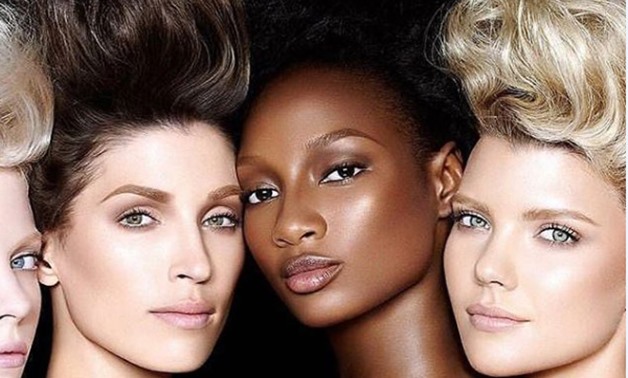
Photo Via Flesh Tone Official Instagram
CAIRO – 5 February 2018: “Beauty is in the eye of the beholder.” Since beauty is abstract and has various perspectives, there really is no way to define it. Though some things seem bizarre to us, in some parts of the world it is what makes a woman pretty and desirable. Here are some beauty standards in different parts on the world.
Scars in Ethiopia:
It is believed that scars make a woman more pretty and attract husband-material men in Ethiopia’s Karo tribe. These scars are created at childhood on the girl’s stomach and body and are seen as extremely beautiful. This ritual is practiced because tolerating pain shows a girl's maturity and her ability to take responsibility of her children. Another reason is that men of the tribe believe that bare skin is ''ugly''.
Pale skin in Japan, China, and Thailand:
In many parts of Asia, pale skin is considered a beauty asset. Therefore, whitening creams are abundant in Japan, China, and Thailand and some there avoid sunlight at any cost. Nowadays, however, these countries are now embracing their natural skin and are confident in it.
Facial tattoos in New Zealand:
Ta-moko tattoos of lips and chins for women are considered beautiful to the Maori people of New Zealand. Blue lips and decorated chins are most prominent.
Brass necks of Thailand and Burma:
Women of the Kayan Lahwi tribe start wearing those heavy coils as young as five years old. By the time they have matured, these coils can be as much as twenty-five fitted into their necks! The rings make it look as if their necks got taller; however, it creates an illusion since it only creates a load on to the shoulders and collar bone pushing them down.
Full figures of Mauritania:
In the past, women were force-fed up to 16,000 calories a day to help them reach that desirable full figure. Girls were sent to “fat farms” that would fatten them up. Thankfully, the government now prevents force-feeding.
Iran’s surgical bandages:
Pioneers of rhinoplasty in the world are proud to show that they have gone under the knife by wearing surgical bandages sometimes for longer than needed. Both men and women are not scared to show it because it shows that come from a high social status. Even those who haven’t had a rhinoplasty purchase the surgical tape and wear it.
Decorated skin in India:
Henna, nose rings, and bindis are used to decorate women’s skin, as well as red dots of red powder, called kumkum, for brides to adorn them. Henna rituals are sacred and consistent; they aren't just limited to weddings. Henna is applied to the palms, hands, feet, and legs.
Crooked teeth of Japan:
Normally, straight teeth are what people all over the world thrive to have; however, the opposite is the case in Japan since women pay a generous amount of money to have crooked teeth. It is known as ''yaeba'' which translates to ''double tooth''. It had only been practiced in recent years but is spreading to the rest of the world. The procedure is normally done to one or two teeth and is supposed to make the women seem less perfect seeming more ''approachable''. A similar trend with growing popularity in the U.S. is known as ''tooth crowding''.
Foot binding of China:
Foot binding was believed to make a better wife out of the girl as she won't complain too much. Though it was banned in the 1940's, you could still find older women especially in rural areas with misshaped feet. This procedure was done by breaking the child's toes and binding them to the foot and tightening the foot with a cloth around it.
Sharpened teeth of Bali and Indonesia:
This painful practice is called teeth chiseling and women of Indonesian tribes endure it because it shows a higher social status. In Bali, it is believed that teeth represent anger and hatred and sharpening or cutting your teeth can alleviate those negative emotions. Other cultures like the African tribe of Wapare file their teeth to make the warriors look more fearful.
Comments
Leave a Comment